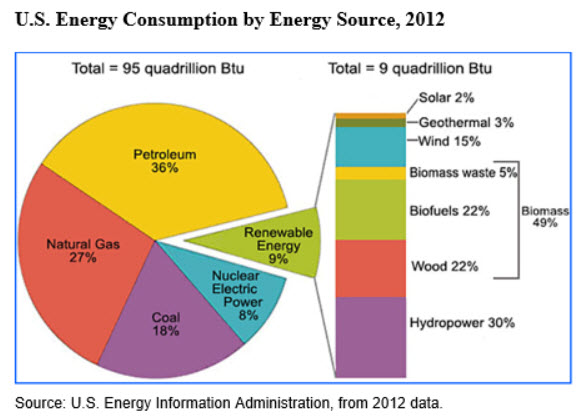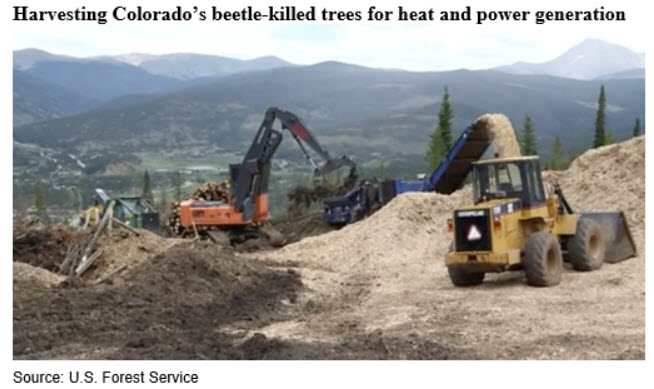WASHINGTON, Oct. 19, 2016 - National Bioenergy Day – today,
Oct. 19 – is a showcase for a nationwide network of biomass facilities
producing heat, electricity and byproducts from woody biomass and agricultural waste.
One hoped-for result: new federal support for biomass energy.
Jeff Serfass, executive director of the Biomass Thermal Energy Council, a non-profit trade association, hopes Bioenergy Day will spark new awareness of biomass energy’s importance and far greater use of the industry’s vast untapped potential. He hopes this knowledge will prod Congress into extending renewable energy tax breaks to give biomass energy the same benefits as wind and solar energy. He also hopes the House/Senate conference committee will keep a key biomass “carbon-neutral” provision in the energy bill which could pass in the lame-duck session after the November elections.
The Senate’s proposed energy bill “directs EPA and other federal agencies to recognize the carbon neutrality of sustainably sourced forest-based biomass fuels and energy in any federal air and energy regulatory actions.” The provision’s bipartisan support is shown by its sponsors: Republicans Susan Collins of Maine, Kelly Ayotte of New Hampshire, Steve Daines of Montana, and Mike Crapo and James Risch of Idaho; Democrats Amy Klobuchar and Al Franken of Minnesota; and Independent Angus King of Maine.

Serfass tells Agri-Pulse that forest waste biomass can be used for heating, generating electricity and providing transportation fuels in ways that improve forest health, reduce wildfire risks, cut carbon emissions, and keep jobs and dollars in rural communities, “not flying off to other states or other countries.”
Citing “a huge opportunity to use our local resources,” Serfass says the key is using waste products and forest thinnings as a “forest management technique for reducing fires and making our forests more productive.”
BTEC Project Assistant Aaron Aber notes that another promising sign is that the Biomass Thermal Utilization Act (BTU Act) has been introduced in both the House (H.R.1145) and Senate (S.727) to provide investment tax credits for high-efficiency biomass heating systems. “That would help put biomass thermal on same footing as wind and solar,” Aber explains.
These hopes for congressional support are shared by Rep. Annie Kuster, D-N.H., co-chair of the bipartisan Congressional Biomass Caucus. She tells Agri-Pulse that she “will continue advocating for the responsible use of biomass energy as a way to reduce carbon pollution and support our rural communities.” She sees National Bioenergy Day as “an opportunity for policymakers and industry stakeholders to recognize the important role that biomass has in promoting renewable energy, creating jobs and supporting healthy forests.”
Kuster adds that along with other Biomass Caucus members,
she will continue urging EPA to provide “regulatory clarity within the Clean
Power Plan for how biomass energy will be treated.” Calling biomass “a
renewable, carbon-neutral energy source that utilizes organic material that
would otherwise be left to decay,” she points out that her state has been
“experiencing the benefits of biomass thermal energy for years,” using biomass
heating in New Hampshire schools, nursing homes and commercial businesses “as a
way to reduce energy costs and dependence on fossil fuels.”
To generate more bioenergy awareness, National Bioenergy Day includes public plant tours and educational programs. Typical events include an open house at Koda Energy in Shakopee, Minnesota. The 23 megawatt heat and power plant generates biomass energy by burning a mix of agricultural and plant seed byproducts including wood chips, oat hulls, malt byproducts, sawdust, and ground-up wood pallets. The plant opened in 2009 as a partnership between the Shakopee Mdewakanton Sioux Community and the Rahr Malting Company. It provides low-emissions biomass energy for Xcel Energy as well as for Rahr, which uses the residual heat from electricity generation in its malting process.
Other events include tours of two Virginia Community Wood Energy Program projects designed to “save money, keep our energy dollars in our local economy, and improve the health of our forests by using wood fuels for heating and manufacturing,” an information session at Iowa State University on career opportunities in bioenergy, and an Illinois Sustainable Technology Center presentation in Champaign on using human or animal waste to produce biocrude oil, grow algal biomass, capture carbon, purify wastewater and recycle nutrients.”
On a larger scale, the U.S. Forest Service points to the multiple benefits provided by its partnership with the Eagle Valley Clean Energy facility in Gypsum, Colorado. The 11.5 megawatt biomass power plant generates clean power for Western Slope towns from Aspen to Rifle, using trees killed by the pine beetle blight that has devastated 5 million acres of Colorado forests. The benefits include not only clean low-cost electricity but also a reduced risk of uncontrollable wildfires.

As part of USDA’s coast-to-coast Forest Service projects designed to generate heat, power, jobs and income for rural America while improving the health of the nation’s forests, the department is also committed to expanding the market for forest biomass by developing new biofuels and biochemicals.
Agriculture Secretary Tom Vilsack says this pursuit of new drop-in fuels for everything from your family car to jet aircraft is part of the administration’s “historic and unprecedented action to reduce the nation’s reliance on foreign sources of energy while investing in cleaner, affordable fuels that are made in America.”

According to DOE’s ongoing series of studies, titled 2016 Billion-Ton Report: Advancing Domestic Resources for a Thriving Bioeconomy, “the United States has the future potential to produce at least 1 billion dry tons of biomass resources (composed of agricultural, forestry, waste, and algal materials) on an annual basis without adversely affecting the environment.” DOE concludes that “this amount of biomass could be used to produce enough biofuel, biopower, and bioproducts to displace approximately 30 percent of 2005 U.S. petroleum consumption and would not negatively affect the production of food or other agricultural products.”
The Department of Energy is also focused on developing new markets for biomass. As part of National Bioenergy Day, DOE is hosting bioenergy exhibits in downtown Washington, D.C., and nearby Germantown, Maryland. As explained by DOE’s Bioenergy Technologies Office, “Biomass is the only renewable energy source that can offer a viable substitute for petroleum-based liquid transportation fuels – such as gasoline, jet, and diesel fuel – in the near term. It can also be used to produce valuable chemicals for manufacturing, as well as to supply power for our electrical grid. The current challenge in bioenergy development is to efficiently convert algae and cellulosic biomass into renewable fuels that are compatible with today’s vehicles and infrastructure.”
#30
For more news go to: www.Agri-Pulse.com